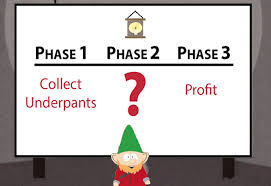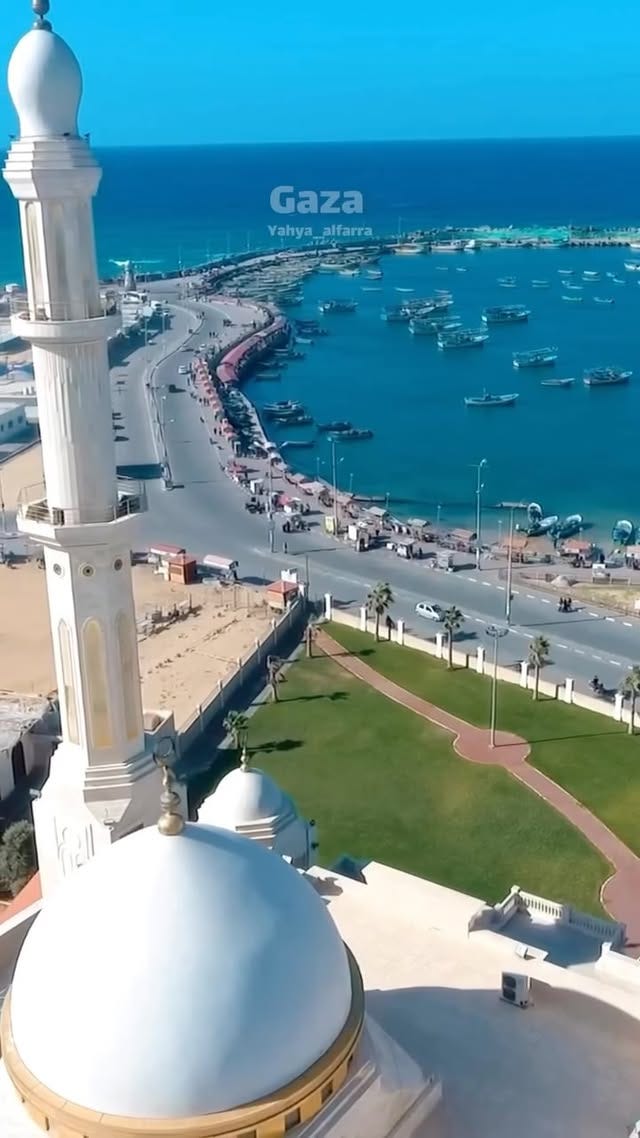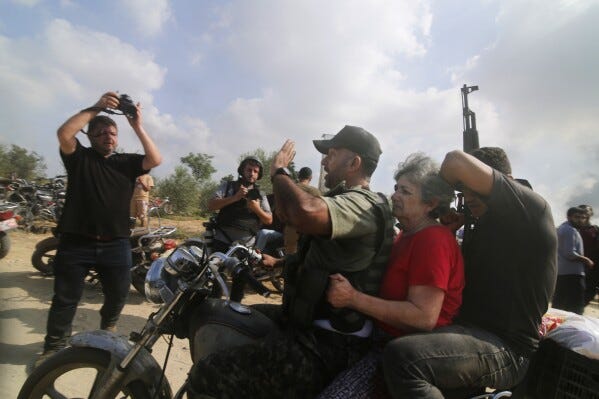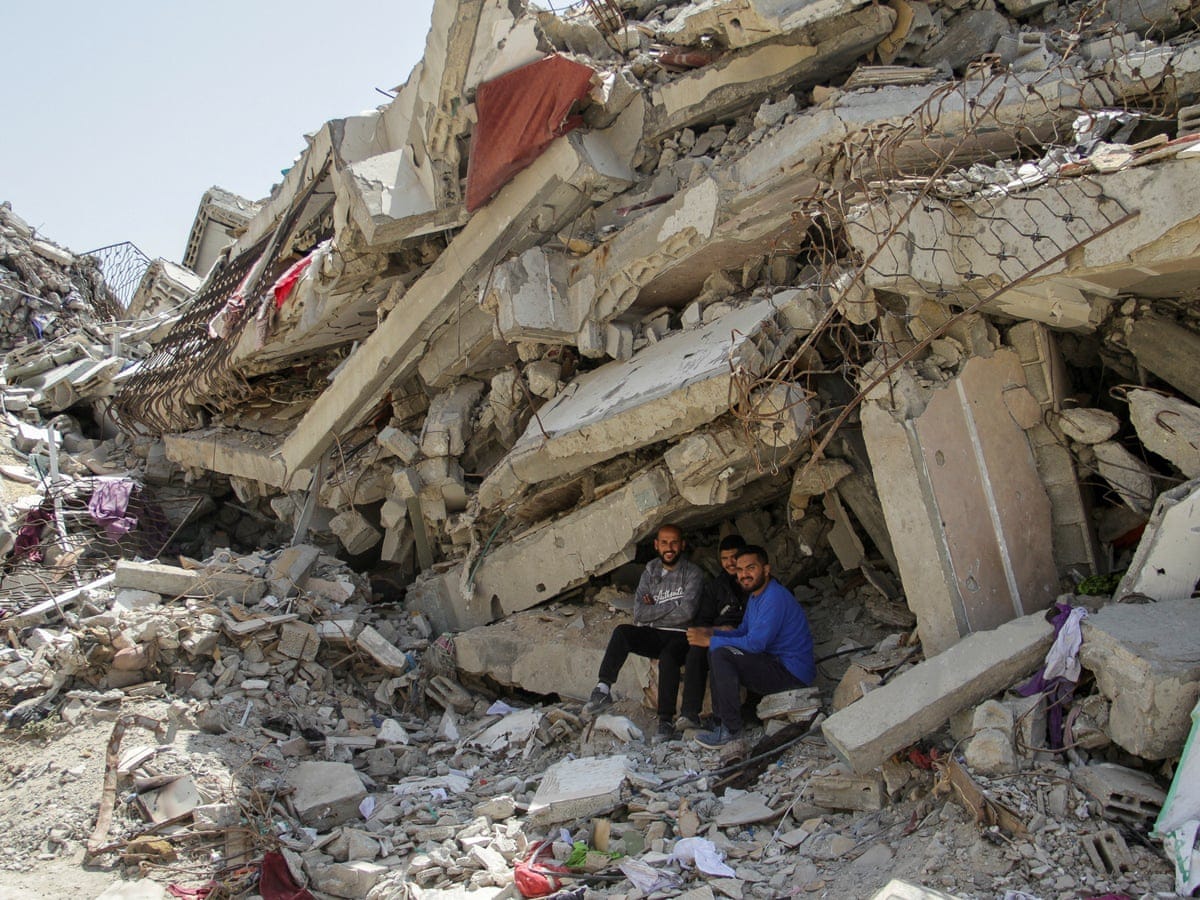One of the incredibly stupid arguments made by Palestinoids while on the back foot in the months after October 7th, when normal people were overwhelmingly more horrified by Hamas than Israel, was that the Palestinians had been forced into adopting such extreme and violent tactics because everything more peaceful they had tried had failed. The two specific things cited here were the BDS movement, which had run into legal obstacles in the United States, and the Great March of Return, which ran into a hail of bullets. BDS we’ll leave to another day except to note that Normal Finkelstein declared it a cult, with unrealistic and unreasonable aims, whose real goal was the destruction of Israel. We’ll focus instead on the 2018-19 border protests in which 223 Palestinians were killed.
The first thing to say about the Great March of Return is that in, conception and execution, it was just really dumb. You don’t need to look much further than the name. The purpose of the protests according to their organisers was to promote the right of Gazan Palestinians descended from those who fled or were expelled from elsewhere in Palestine in 1948 to return and live there, or in some other part of the State of Israel. The proposed mechanism for this was that they would approach a militarised fence with a country they had been at war with three times in the past ten years, kind of shout stuff, and then …
It’s hard to parody something like this. It’s not just that it’s cruel, it’s that … what am I even supposed to say? “Doing that would be as stupid as walking up to the militarised fence of a country you have been at war with three times in the past decade and shouting stuff"? But that’s the literal thing you did. Nevetheless, these protests received practically universal support among Gazans, including Hamas, Fatah, Palestinian Jihad, the PFLP, and also the non paramilitary liberal-leaning ones. I dunno, maybe you have worms in your brains?
Of course, what happened is a bunch of people got shot. Hasbarists like to claim some of it was staged; they would take children who had died in hospital and bring them to the fence to be recorded as military fatalities, stuff like that. Maybe, but mostly it was just people making a ‘a powerful statement of defiance, bravery and national pride’ and then getting a bullet in the leg, or maybe the head, until eventually they had had enough and stopped.
What did the March of Return achieve? Well, they didn’t Return, so it didn’t achieve that. I suppose it made a ‘powerful statement of defiance, bravery, and national pride’; maybe you can put that on a plaque or something? The other thing it did was causing Israel some diplomatic issues for a bit, but that blew over in due course, and the Abraham Accords happened.
In fact, if we drill down, we really find that the March of Return had precisely one concrete achievement. At its commencement, Israel had a strict policy of shooting anyone who entered a 300 meter buffer zone. This policy was ‘successfully’ exploited by Gazans for the purpose of getting themselves shot. Because it looked pretty bad, Israel relaxed its policy a bit for the future. We don’t know how relaxed it became, because the IDF has never specified its policy either before, during or after the event. We know that they didn’t relax it all the way, because there were sporadic incidents of Palestinians being wounded or killed for approaching the fence in subsequent years. We know they relaxed it to a degree, though, because there is extensive documentation of Palestinians milling around within the buffer zone and not getting shot, especially in the run-up to October 7th … oops.
Those whom Allah would destroy
In September 2023, there were renewed protests at the Gaza fence, animated by the same conviction that if Palestinians approached the fence and shouted things, Israel would dissolve. You can read a description by the buffoons of +972:
It has therefore become increasingly clear that Palestinians in Gaza, after enduring 16 years of siege, are reaching a breaking point. Through these protests, like other resistance activities throughout the occupied territories, Gazans are demonstrating a sustained battle against their occupiers, a continuation of the “Unity Intifada” of 2021. For young Palestinians, whose dreams have been ruined and lives deemed disposable under Israel’s rule, such protests are often their only hope of confronting a decades-long system of oppression and abuse, a source of hope for escaping their lifelong status as refugees in their own homeland.
As Joni Mitchell said, you don't know what you've got till it's gone:
They paved paradise, put up a parking lot. A whole bunch of ‘em, as far as the eye can see. Anyway, the article decries the ‘brutal response’ of the IDF to these protests, but the reality is that, despite the protests including obvious provocations and gunfire, the IDF was restrained in response, tolerating routine violations of the buffer zone that were judged non-dangerous, and relying on warning shots and tear gas rather than direct fire. Observers from the great sprawling industrial security complex at the time were concerned, as in this example less that two weeks before the Flood:
It has been almost two weeks since Hamas has allowed and orchestrated the friction in several locations along the Gaza Strip border fence. While preparing infrastructure for the comfort of the rioters, Hamas is careful not to allow too large a number of protesters to arrive in the area, so as not to lose control of the events and to avoid an excessively high number of casualties, which could turn the anger toward the organization. At the same time, these events see a form of escalation with regard to the use of firearms (mostly gunfire at IDF soldiers) and explosive charges, which, it seems, consist of regulation-level explosives.
Hamas’s working assumption is that Israel would prefer to contain the provocations in order to avoid a security deterioration in the sector and beyond, in part due to its domestic distress and the government's limited room to maneuver.
…
Hamas's provocation incurs serious potential for escalation, while Israel's contained and restrained response continues to erode its deterrence against the other actors in the region. In addition, it also feeds or encourages the Palestinian terrorist system in the territories and creates a comfortable space for Hamas to continue its provocations. If the situation continues to behave as usual, Israel may find itself faced with an uncontrollable escalation in the Gaza Strip, at a time that is less suitable for it, and a further escalation of terrorism in the West Bank, while Hamas continues to undermine the Palestinian Authority and weaken it in a way that does not serve Israeli interests.
When you’re right, you’re right. While we still await a full enquiry into October 7th, we know about enough examples of preparations that wouldn’t have been possible had Israel been properly enforcing the buffer policy to identify it as a factor.
A strong version of this thesis, which I have entertained myself, is that Hamas deliberately engineered the March of Return to make Israel abandon strict enforcement of the buffer policy as one of the precursors to planning October 7th. However, amidst the flood (gettit?) of inane pablum and cliches in the pamphlet by Ahmed Abu Suhaib that I reviewed last week, he revealed something different:
The idea of the Flood came about by chance during the Marches of Return that erupted at the borders of Gaza in 2018 and 2019. Those marches, though raised under the slogan of peaceful protest, gave the resistance many valuable lessons. Among the most important of these was the discovery of several breaches in the land fence. Youth who approached the barrier during the demonstrations revealed weaknesses and gaps that had not been noticed before.
From that moment, the idea was born. It was necessary to act quickly and in complete secrecy to study these breaches and to exploit them. For if the enemy had noticed them, or if the information had leaked, the opportunity would have been lost forever. What began as a chance observation was transformed into a strategy, and over the following years it grew into a comprehensive plan: the Al-Aqsa Flood.
So there you go. It wasn’t part of the original plan, but strategic actors know how to adapt and modify their plans in response to changing circumstances. They may be resigned, for the time being, to not sticking their head in the blender. A blender of sufficient size is, after all, expensive. But, by chance, they encounter one on their way to buy a scone and coffee, and into the blender it goes. Brrrrr.
Gaza over the past few decades had a lot of problems. Its main problem was that it was full of Gazans, but it had other problems too, some of them, no doubt, legitimate grounds for grievance.1 However, of all its problems, the fact that Gazans couldn’t go within 300 meters of the fence without getting sniped was barely even on the list. I won’t say it wasn’t a problem at all; I understand that it was an inconvenience, and sometimes much worse than that, for farmers trying to eke out what they could from the limited supply of unconcreted land available. Most Gazans weren’t farmers, though, because this is the 21st century. For 99% of them, whatever indignities and privations they had weighing on their lives, not being able to go and walk up to a fence wasn’t one of them. At any rate, they shouldn’t have considered it to be one. But they did, and so, by design, they gained the right to approach the fence with a lower chance of being shot, and, by happenstance, they discovered holes they could poke through too. And then, for one glorious day:
Mostly, on this blog, I take a dump on Zionists, which is both right and my right, but it does have the unfortunate effect of picking up undesirables from the other team. I don’t know if anyone reading this has spent his or her years as a professional or vocational advocate for Palestinian nationalism as it lurched between atrocity and imbecility and back again, but, if you did, I think you should literally die right now of self disgust. Seriously, look into the mirror, deep into your eyes; breathe deeply and feel the stroke welling up at the top of your neck until, finally, nothing. It’s honestly the bare minimum duty requires.
The best account I know of the surreal mental asylumin which Gazans lived and died remains that of Peter Hitchens.






The March of Return is one of those cargo cult things where someone engages in an act of protest that they copied from somewhere else and are shocked that it didn't lead to the result they ostensibly wanted. Why would the March of Return convince anyone of anything. The Israelis know you want to leave Gaza - that's not the issue. The issue is they think if they let you out you will murder them in their beds. If you want them to let you out you have to convince them that you're not going to do that.
You are the other team.
You always have the option to leave the Golan Heights, go back to antizionist Europe, rather than be a sniveling loser under the literal protection of Israeli Jews, Druze, Muslims and Christians defending the border you live near. Go back. You’re a net burden on the country. Take the Satmers with you, welfare leaches and Jew-hating garbage that they are.